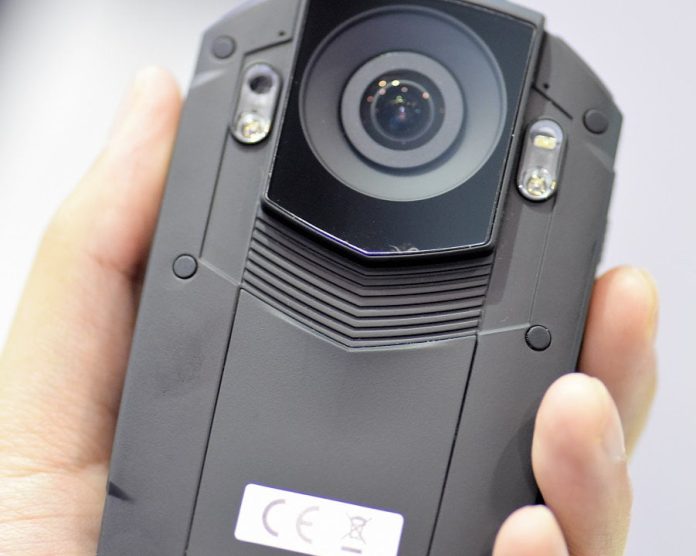Body-worn cameras are an increasingly important part of the electronic security framework and allow video streams and audio to be recorded locally or streamed directly to a control room for monitoring in real time. For security managers considering this technology, it’s vital to get across the most important aspects camera performance – and system integration.
Choosing body-worn cameras requires a different approach when compared to selecting other CCTV cameras. You want a device that’s compact, light, unobstrusive yet purposeful looking, easy to attach to clothing or equipment – preferably on the body not the head – a lens with a wide but not too wide angle of view, a resolution that allows a reasonable depth of field without costing low light performance, long battery life, fast charging, ease of operation, something robust – it needs to be able to hit the ground and keep working. And it needs to be weatherproof.
Low light performance is important, too. So is resistance to motion blur – these 2 capabilities don’t go together all that well.IR might be useful or not, depending on propensity to induce flare in faces – it might be better to train officers to address the public with the backs to the light. You want comms – Wi-Fi, Bluetooth, SIM (4G), a removable storage card, easy connection to a workstation or laptop without a weird cable type. In some cases, a display screen might be useful, especially for managing functionality. The unit should be capable of getting easy firmware upgrades and it should have proper cyber security protocols – the same as your CCTV cameras. A watermark might prove useful, too.
Body worn cameras can be left on, or they can activate automatically, which is good. They might activate when a car door is opened, when a light is turned on, by movement. Choice of resolutions will need discussion but 720p would work well – 1080p is probably more that required for the sort of close-up work body worn cameras do. Battery life – you want 48 hours minimum – 72 hours is better. This means a security officer does not need to get the camera into a dock after every shift. With the reduction in the cost of storage cards, storage and frame rate are becoming less of an issue but you’ll still need to think about whether you use 128GB cards or something smaller and dock more often.
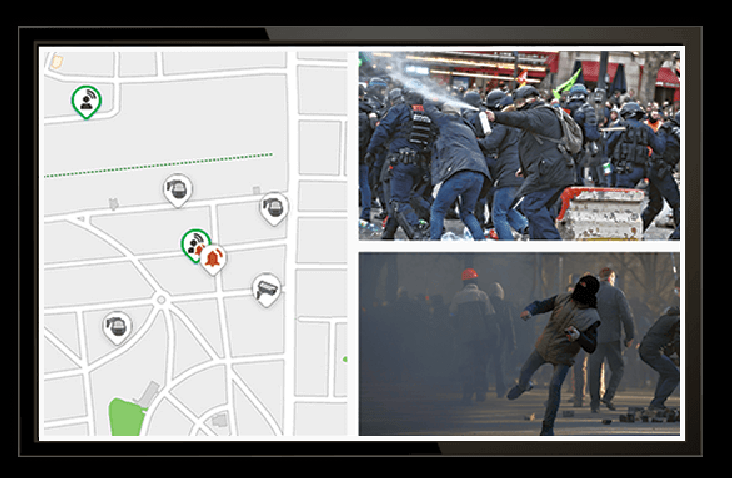
Ron Grinfeld of FLIR Systems says body-worn cameras were originally designed to address several applications within the law enforcement space, mainly around the need to capture and store visible and audio data throughout the shift.
“The ability to capture and record all incidents that occur during a shift allows them to be used as evidence, if such a need arises,” Grinfeld says. “There are no special needs for VMS integration in these cases, given that offline storage and access to the stored data from body-worn cameras is typically handled via dedicated digital evidence management software, which is often bundled with cloud-based storage plans.
“However, new generations of smart body-worn cameras that are designed to address other use cases are becoming available. These new products are equipped with real-time streaming capabilities to address other concepts of operation. One primary example is video surveillance driven physical security and public safety solutions,” Grinfeld explains. “These areas typically involve a network of security cameras, as well as other network enabled edge devices–such as access control readers, dedicated sensors such as gunshot detectors, dedicated license plate recognition cameras and so on– all managed by a centralized VMS.
“Given the partial coverage and birds-eye view of security cameras in outdoor environments, the changing threat landscape, and the effectiveness of real-time video and data streaming to central command and control locations during evolving incidents, there is new demand for body-worn devices. There is demand for devices that not only stream in real time, but also assimilate with the VMS network through a deep and seamless integration between the devices and the VMS. This allows the VMS to serve as the main management and streaming platform for these devices as with all the other deployed physical security assets.”
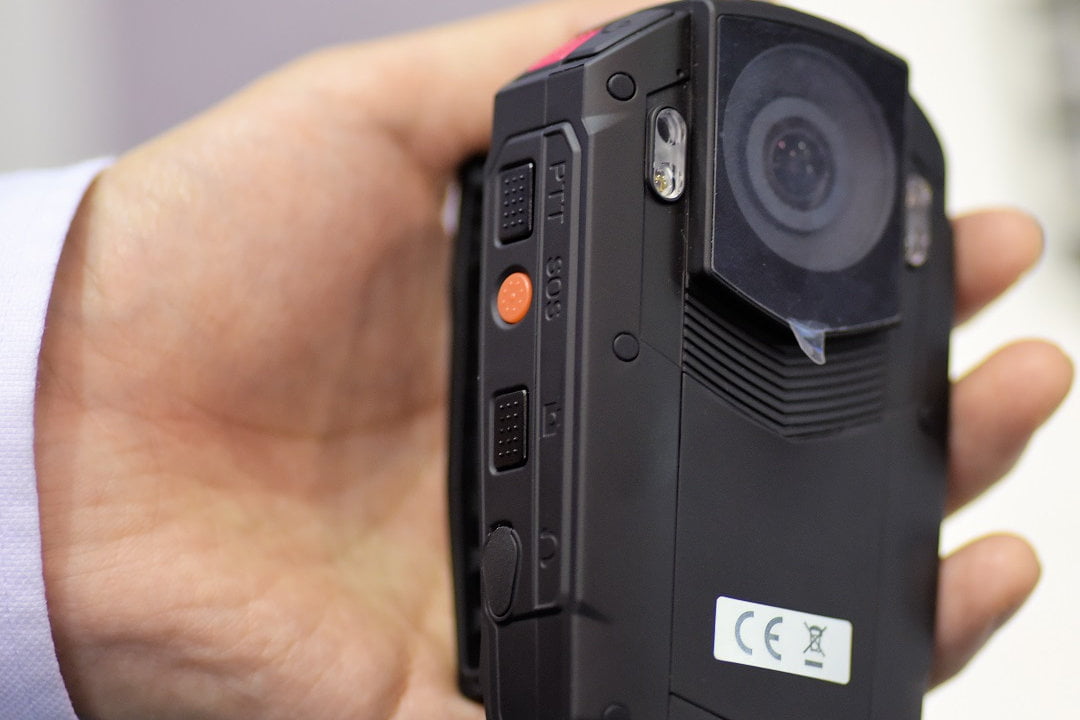
Grinfeld argues body-worn cameras have a significant role to play in security applications.
“If we think of the new generation of body-worn cameras as smart IoT devices (due to their ability to communicate in real time and become part of a network), we realize that any operation that involves field personnel and central command requires or will require such technology at some point,” he explains. “In some cases, this is the reality today. Any first responder entity would greatly benefit from such technology – especially ones that are involved in search and rescue and other public safety operations. For instance, we see an increasing demand in safe city projects that are part of a smart city grid. Furthermore, stadiums, private guards, and even delivery operations are other examples of current needs for smart body-worn cameras.”
According Grinfeld, key performance parameters revolve around low light performance and image stablilisation.
“Due to the nature of body-worn camera products, image quality aspects are mainly around stabilization and low light performance,” he says. “Recent developments in security camera sensors have created compact and flexible sensor options for use in body-worn camera products. From a night performance standpoint, many body-worn camera products are at least as good as regular security cameras, including high-end models. Body-worn cameras typically capture short range imagery while utilizing lower resolution sensors; most are using 1080p sensors versus 4K, which is becoming the standard for security cameras.
“With regards to stabilization, higher-end body-worn products are implemented with physical state sensors assisting in the stabilization process (gyro-based image stabilization). Utilizing this technology resolves details in the captured video, including biometric details (for facial recognition), license plate reading and other elements in the scene, regardless of the physical condition of the camera during the video capture (for example, whether the user is running or the camera is mounted in a vehicle driving over a bumpy road).”
A question for integrators and end users is the nature of a typical body-worn camera. According to Grinfeld, an ideal setup will include onboard recording for post-shift upload/offload, and real-time streaming in parallel (for situational awareness during the occurrence of the event), enabled via both Wi-Fi and cellular connectivity (4G LTE).
“An outdoor device that is suitable for emergency situations by any field operator must have cellular connectivity,” he says. “Otherwise, it can only be used within areas that are covered by non-public Wi-Fi.”
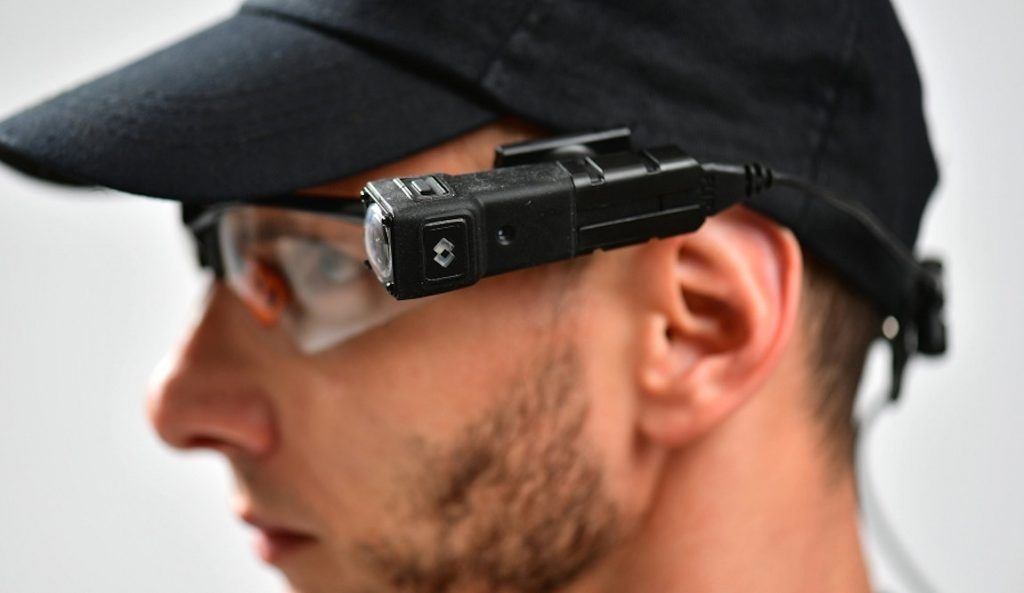
Grinfeld says a body worn camera can be used independently of a CCTV solution.
“Yes, with proper software/cloud standalone replacement enabling data management, it can be,” he says. “However, this has little benefit outside of the law enforcement space, since the camera will not be able to stream live video to the operations or command centre and will not be able to interact and have its data associated with the other CCTV devices based on time and location.”
Grinfeld is reluctant to say too much about the cyber security protocols for body worn cameras.
“Due to several constraints, including confidentiality, we are not able to list and specify each protocol that is being used for cyber security with body-worn cameras,” he explains. “Generally, body-worn cameras need to support all the cybersecurity protocols that are required for security cameras–TLS based encryption, IEEE 802.1X, HTTPS etc.–, and additional layers. These protocols help to ensure that the content is always signed and associated with the specific user who is wearing the camera at each point in time (full chain of custody) and that the device cannot be tampered by its wearer, or if it falls into the wrong hands (device-user-system authentication).”
Something else to consider is cost and that’s hard to pin down.
“Cost depends greatly on the functionality, real-time capabilities and whether the product enforces a cloud storage plan,” Grinfeld explains. “If there is a cloud storage plan, the unit cost will be lower, but additional long-term costs should be factored in – price range is wide. Simple products without real-time capabilities and mandatory cloud storage plan are a few hundred dollars. A true IoT solution device with communication peripherals, long operating battery and significant on-board storage may be a few thousands of dollars per device.”
According to Grinfeld, the functionalities and features end users and integrators should be looking out for when they select body worn cameras include:
* The real-time capabilities and how they integrate with the video surveillance / CCTV
network and eco-system.
* Can it act as an IoT device allowing units to interact with each other and with other
CCTV assets on their network?
* Is there an API available?
* Ease of use, ergonomics.
* Ease of unit deployment and assignment.
* Can a device be ‘hot-swapped’ between users?
* Are the concepts of operation / business logic profiles user programmable? Can a
different profile be assigned for a different user with the same device?
* Cybersecurity.
* Image quality.
* Battery and storage capacity.
* Is the product limited to cloud storage? what are the long term and maintenance costs over a 3-year period?
Phil Viggiano of CRK says there are many functionalities and features that end users and integrators should be looking out for when they select body-worn cameras.
“I’d be thinking about heritage of supplier and asking questions such as – have they got a long, proven track record? Have they demonstrated innovation and investment in the future? Does the camera come with a sophisticated VMS?” he explains.
“You want the camera lens direction to be adjustable, but you need to be sure it’s pointing in the right direction, you want the camera to be easy to use, you want the battery to last long enough for your use case, for many applications you want the camera to look like a cameras as this can enhance the overt and deterring nature of the body camera. The camera also needs to be easy to mount.”
According to Viggiano, it’s vital that body cameras can be integrated into VMS where required.
“VMS is an essential part of utilising body camera technology from an evidential integrity and management point of view. The body camera is only the means to capture video footage,” Viggiano explains. “It is the video file itself which is the valuable commodity to the judicial system. As such, being able to securely manage, retain and share the footage with authorised stakeholders while maintaining evidential integrity – in other words, being able to prove the footage has not been tampered with – is the highest priority.”
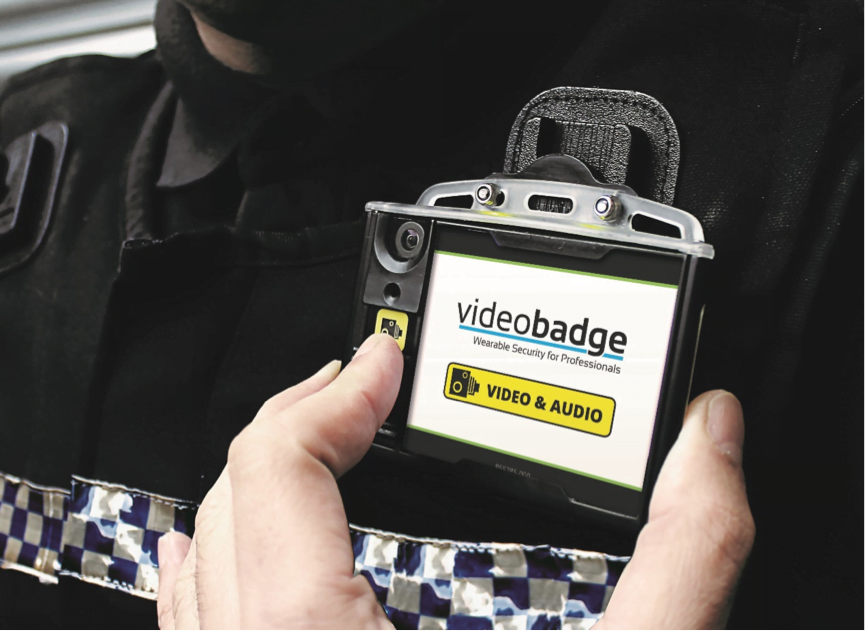
Viggiano says body cameras are now being seen in applications outside law enforcement.
“Body cameras are already being used by private security organisations outside of law enforcement around the world,” he says. “In the UK, which is leading the world in the adoption and usage of the technology, retail security guards have been operating with body cameras in malls for several years. They are experiencing the same benefits from the technology as law enforcement have; namely protecting officers by diffusing aggression and violence and by capturing an independent account of incidents if they escalate.
“Further to security: local government, debt collection, transportation and facilities management organisations are examples of other industries employing the technology outside of law enforcement.”
Performance is a key element of body cameras – and the best body cameras make a good job of key performance parameters including image quality, low light, backlight and frame rate.
“Reveal body cameras can record full HD 1080p and boast the industry’s best low light performance with 0.05 lux at 30fps,” he says. “The cameras have a 110-degree horizontal and 50-degree vertical wide-angle lens, which can be rotated on the articulated camera head a further 305 degrees horizontally and 173.5 degrees vertically. Also important, they can live stream via Wi-Fi and record onboard for later download.
“The Reveal D5 has the ability to stream in real time from the camera through a WIFI network or via a mobile device connected to a cellular network. High quality video can now be seen live anywhere in the world allowing real-time situational awareness and decision making. This ability has the potential to completely transform certain incident handling and outcomes, giving our customers a totally new tool to enhance their effectiveness.”
Something else that’s important is that body worn camera systems can be managed independently of CCTV solutions.
“Reveal provides DEMS 360 software, which is a digital evidence management solution for managing all kinds of digital evidence,” Viggiano explains. “This includes body camera video, audio files and images – DEMS 360 is capable of managing an organisation’s CCTV footage.”
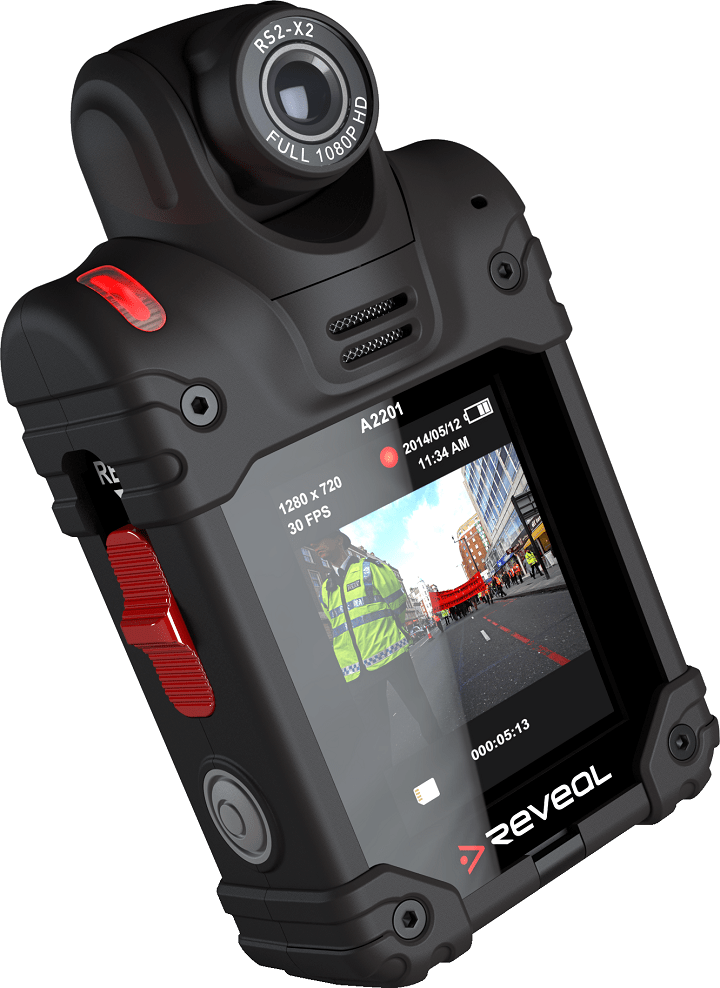
Not surprisingly given their networkable nature, the cyber security protocols are as important for body worn cameras as they for static field cameras.
“In the case of Reveal body cameras, there’s AES-256 encryption and when encryption is activated, on-board playback requires a PIN (keystroke sequence) to view videos, which prevents unauthorised viewing,” Viggiano says. “Video files can only be accessed and viewed on authorised PCs with DEMS 360, which decrypts the files on upload.
“Trusted mode stops the camera from being recognised as a storage device on any PC except on authorised computers that have DEMS 360. This prevents unauthorised access to the files. The camera keeps a log of how many videos were recorded and this is checked at the point of upload to ensure the number of videos uploaded match the number of videos recorded. A SHA256 hash value is created when videos are uploaded to DEMS 360 and these hash values ensure that any video exported from DEMS 360 is the original file and has not been tampered with.
“Access levels are important, too, and DEMS 360 provides a fully customisable user level access permissions matrix so administrators can define what different user levels are able to access and perform in DEMS 360. This protects unauthorised access to restricted files. DEMS 360 provides the ability to cloak files, which may be used when sensitive material has been uploaded. This bypasses normal access levels and can only be viewed by user levels as defined by the administrator.

“The DEMS 360 system also keeps a comprehensive audit log of every action and event performed to files in the system from the point at which it was uploaded and throughout its lifetime in DEMS 360. The audit log records the date/time of the action, the user who performed the action, the computer where the action was performed, and the description of the action itself.”
Meanwhile, Dylan Dong of Hikvision Australia, says streaming body worn cameras into a VMS using standard ONVIF Protocol S/G or RTSP is an increasingly common request from customers.
“We definitely see applications in the security industry,” says Dong. “In shopping malls and clubs – security and safety officers tend to feel more comfortable with a bodycam activated to record video, and people will generally behave themselves when they think their actions are being recorded. The same applies to council rangers – wearing a safety vest and bodycam would help them issue tickets for illegal parking, illegal dumping and unleashed dog walkers without conflict.”
According to Dong, the features integrators and end users should be looking for include compact design, light weight, long battery life, high shutter speed and a docking station.
#sen.news



